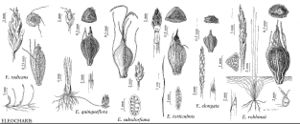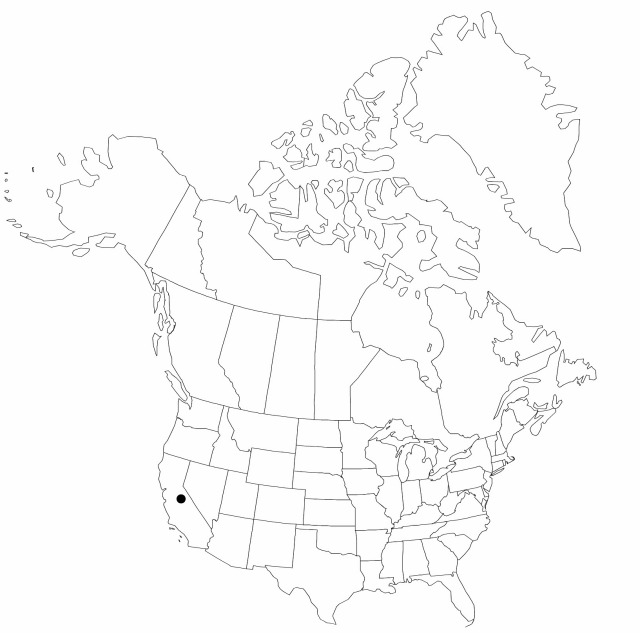Eleocharis torticulmis
Novon 11: 250, figs. 2, 4E–I. 2001.
Plants perennial; rhizomes 1.5–2 mm thick, scales persistent, 7–9 mm, thinly papery, sometimes fibrous; resting buds unknown; caudices present, hard, 3 mm thick. Culms erect, markedly spirally twisted, markedly obliquely contracted near spikelet, when dry often with to 6 broad, rounded ridges on each side, greatly compressed, 3–4 times as wide as thick, 20–40 cm × 1.5–2.5 mm, firm; culm tufts not proximally bulbous. Leaves: distal leaf sheaths stramineous to medium (or dark) brown, papery, apex often dark brown to reddish, broadly obtuse. Spikelets 6–8 × 2–3 mm; proximal scale empty, 3–4 mm, shorter than to equaling spikelet; floral scales 8–10 per spikelet, 3.5–5 × 2 mm. Perianth bristles 0–5, unequal, rudimentary to equaling achene, the shorter stout, smooth or nearly so, the longer slender, densely spinulose. Anthers 1.8 –3 mm. Achenes stramineous to medium brown, thickly trigonous, 1.75–2.75 × 1–1.25 mm; beak 0.3–0.6 mm. Tubercles 0.25–0.6 × 0.3–0.55 mm.
Phenology: Fruiting summer (Jun–Jul).
Habitat: Fens, wet meadows, vernal ponds
Elevation: 1100 m
Discussion
Of conservation concern.
Eleocharis torticulmis is known only from the botanically rich Butterfly Valley in Plumas County.
Selected References
None.

